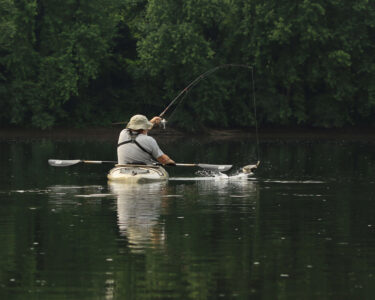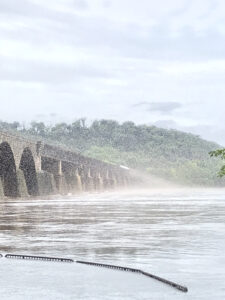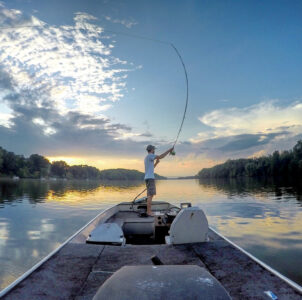Summer spectacle on the Susquehanna features white mayflies
- PHOTO PROVIDED An angler catches a fish in this photo by Ronald Metzger. Smallmouth bass and other fish love the hatch of white mayflies as it’s a feast for them.
- PHOTO PROVIDED A swam of white mayflies is shown swarming on the Susquehanna River in this photo by Dustin Underkoffler.
- PHOTO PROVIDED An angler casts a fishing line off a boat in this photo by Matt Gutelius. Smallmouth bass and other fish love the hatch of white mayflies as it’s a feast for them.
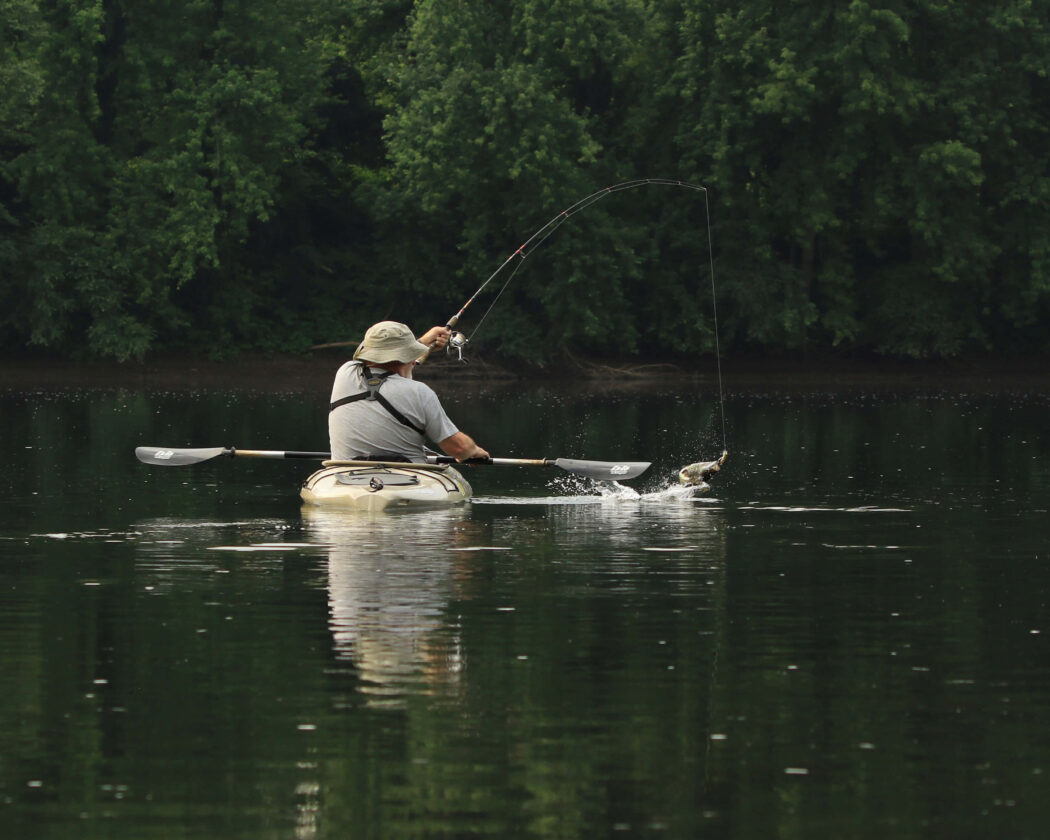
PHOTO PROVIDED An angler catches a fish in this photo by Ronald Metzger. Smallmouth bass and other fish love the hatch of white mayflies as it’s a feast for them.
Summer along the Susquehanna River brings all the classics: sunny days, kayak floats, riverside hikes and picnic-perfect evenings. But if you’re in the Lower Susquehanna Region in late July or early August, you might witness one of the river’s most curious natural events: the white fly hatch.
That’s right–flies. Thousands, even millions, of delicate white mayflies rising from the river in a swirling display that looks more like a snowstorm than summer. But don’t worry–this hatch is a good thing! It’s a sign of healthy waters, abundant fish and thriving ecosystems along the Susquehanna Greenway.
THE MAYFLY LIFECYCLE
White mayflies are a species belonging to the order Ephemeroptera. True to their name, their adult lives are fleeting, but their journey begins long before they ever take to the air.
Mayflies begin life underwater as nymphs, living for months — or even years — among the gravel and rocks of freshwater streams. When water temperatures and conditions are just right, the nymphs release oxygen bubbles to rise to the surface, shedding their outer layer and emerging as a subadult called a dun.
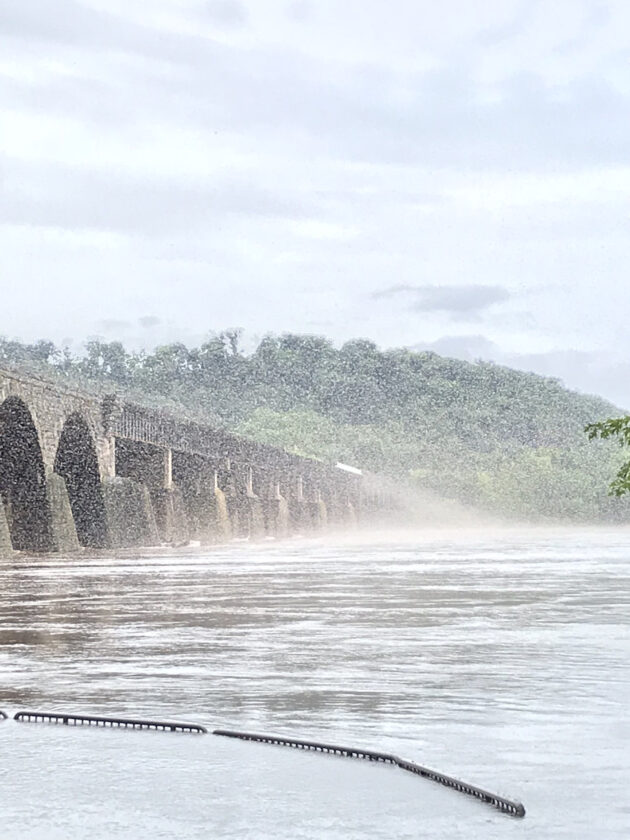
PHOTO PROVIDED A swam of white mayflies is shown swarming on the Susquehanna River in this photo by Dustin Underkoffler.
After a short rest to let their wings dry, they take flight, molt once more, and become full-fledged adults, or spinners.
Their goal? To reproduce and lay eggs on the water’s surface–starting the cycle anew. From emergence to death, a mayfly’s final chapter plays out in just a day or two.
A BLIZZARD IN JULY
The Lower Susquehanna is home to one of the most spectacular white fly hatches in the region. Starting just below Wrightsville and spreading upriver, these hatches peak around dusk in late July and early August. Flies come up slowly at first when the sun begins to set. Then, all at once, bugs are darting about in swarms.
Locals often describe the hatch as a snowstorm or a summer blizzard. There are so many, the sound of the wingbeats could easily be mistaken for rain. The flies are drawn to bright lights, especially on bridges and in town centers. In fact, some bridges turn off lights during peak hatch evenings to avoid slippery road conditions caused by piles of insects.
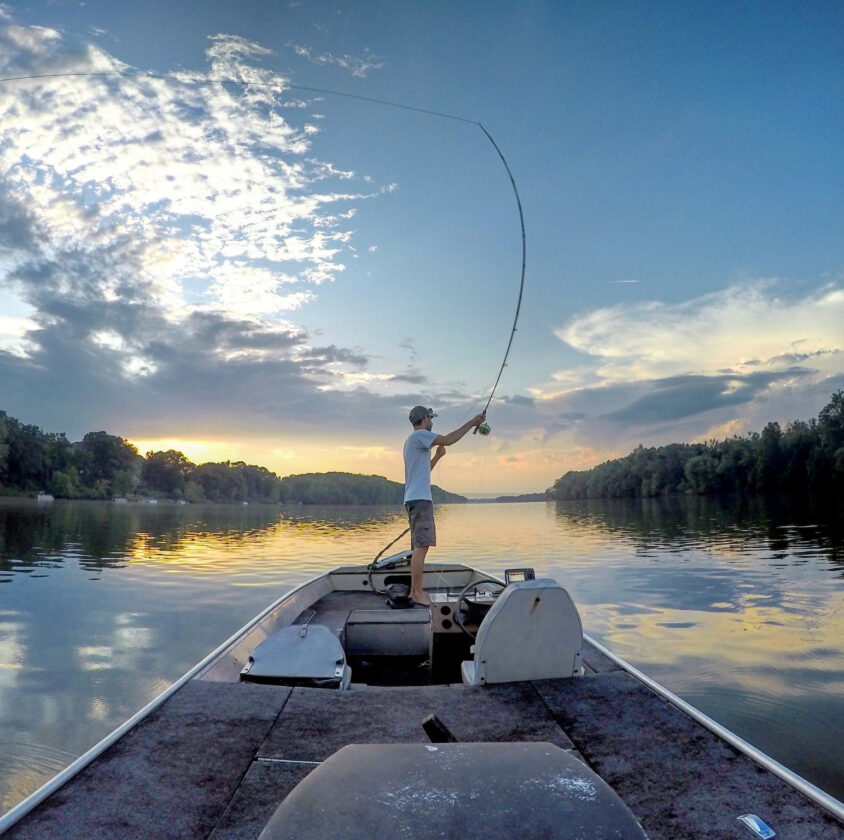
PHOTO PROVIDED An angler casts a fishing line off a boat in this photo by Matt Gutelius. Smallmouth bass and other fish love the hatch of white mayflies as it’s a feast for them.
If you’re hoping to witness the show, parking lots near streetlights or shopping centers offer a safe and well-lit front-row seat. Just be sure to drive carefully at dusk–the bugs can reduce visibility in hatch-prone areas.
A TREAT FOR ANGLERS (AND BASS)
For smallmouth bass and other fish, the hatch is more than a spectacle, it’s a feast. The Susquehanna Greenway is a favorite destination for anglers, and the white fly hatch is one of the most anticipated times of the year.
From Wrightsville to Harrisburg — and even in tributaries like the Yellow Breeches — fishing conditions peak between 8-10 p.m. when the flies are most active. Fly fishers from all over the country come to take part in the action. If you head out, bring a buddy, follow all safety precautions, and make sure you’re up-to-date on local fishing regulations.
WHY IT MATTERS
As dramatic as it looks, the hatch is more than just a curious phenomenon: it’s a key indicator of river health. Mayflies are highly sensitive to pollution, so their presence in large numbers means the water is clean and the ecosystem is thriving.
They’re also an essential part of the food web, providing nutrition for everything from fish to birds. A healthy hatch supports a healthy river and a vibrant Susquehanna Greenway for all to enjoy.
BUZZING ALONG THE GREENWAY
The white fly hatch is just one of many natural wonders along the Greenway. Whether you’re fishing, hiking, paddling, or simply enjoying the view, take a moment to appreciate the magic of summer on the Susquehanna.
It may fly by before you know it.
Darian Jones is the Communications and Outreach AmeriCorps Assistant for the Susquehanna Greenway Partnership. A recent graduate of Commonwealth University Bloomsburg, her work with SGP is focused on promoting trails and communities within our vibrant and connected Susquehanna Greenway, so that the public can enjoy opportunities to engage with the outdoors. Visit susquehannagreenway.org to learn more.

